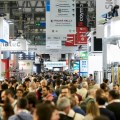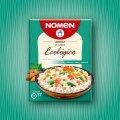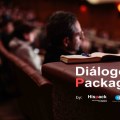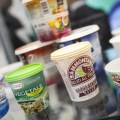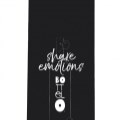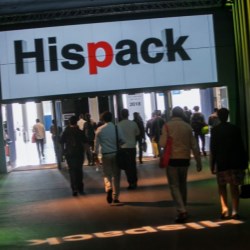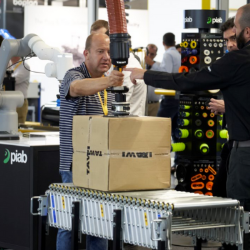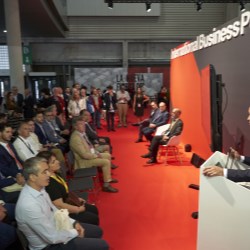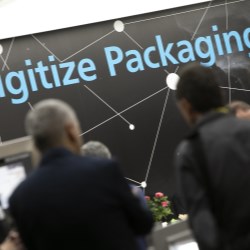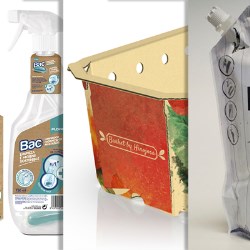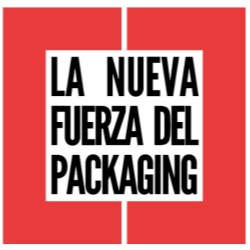If this is your company, CONTACT US to activate Packbase™ software to build your portal.
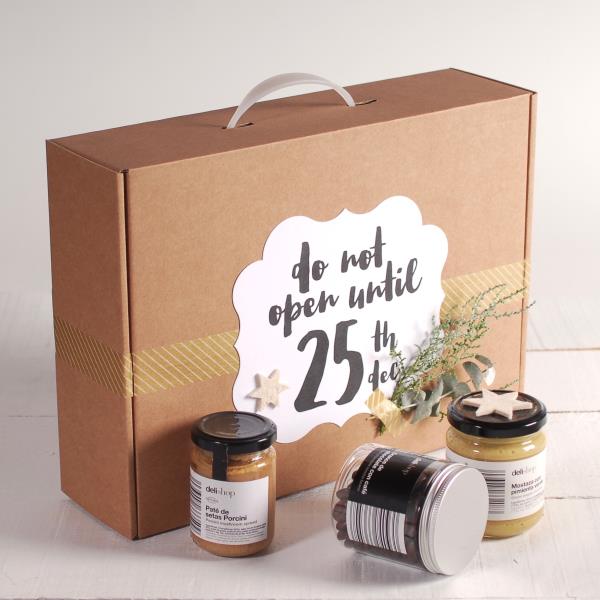

For decades, packaging has had as normal "showcases" all types of stores and large surfaces, scenarios where the consumer saw, touched, and purchased the product in the physical store itself. But the arrival of the Internet has meant a revolution not only for brands, and for personal and professional relationships. In the digital world and through e-commerce, the packaging industry is living its own reinvention and adaptation to an environment with new codes and challenges that need to be faced. How is e-commerce transforming the function of packaging? Experts, online platforms, and manufacturers give us their points of view.
In electronic commerce a sale is not finished until the purchaser places his/her order. In fact, this is where one of the most important phases of the process begins: the moment when the customer receives the product and the packaging becomes the first contact and connecting link between the brand and the customer. If this contact through the packaging is positive, the brand will have taken an important step to gaining customer loyalty or for generating a waterfall of positive commentaries in social networks.
Josep Maria Garrofé is the CEO of SelfPackaging, an online store that offers a catalogue of more than 3,000 boxes that can be customised to the customer's taste. As packaging designer, Garrofé considers that "impacting the customer is essential when he/she receives the product because the surprise factor is a differentiating value in an e-commerce purchase, where the customer interacts and an expectation is naturally generated". "Brands have to take advantage of those five golden seconds to transmit all the corporate values", he adds.
Redefining the rules of the game
E-commerce has been one of the most disruptive phenomena in the digital era we're living in and, by extension, has led to a revolution for the packaging industry. The transaction of online products and services exceeded 6.7 billion Euro in the first trimester of 2017 in Spain alone, nearly 25% more than the previous year, according to the report prepared by the National Markets and Competition Committee (CNMC for its Spanish original). Along this line, the 2017 Annual E-commerce Study, prepared by IAB and the consulting firm of Elogia, highlights the increase of purchasers that exclusively used the Online channel (17%) last year, at the cost of the purchasers that exclusively used the Offline channel, as well as the increase in spending on online purchases (an average of 80 Euro), and the greater frequency (2.9 times a month).
In this context, the Director of Marketing of Font Packaging Group, Ramsés Català, differentiates two types of online stores: the "pure" e-stores (that only exist in the digital environment), and those that have e-commerce as an extension of the physical point of sale. For Català "packaging in e-commerce is in a transitional phase because there is so much territory to explore and many points of improvement". As a company dedicated to the manufacture of corrugated cardboard, cardboard boxes, and packaging since 1954, Font Packaging Group has both online and offline trade customers. The company's marketing head explains that one of the most common situations, especially at the start and in companies with physical stores, was the complexity of incorporating the logistical part of the sales process in companies that until that moment didn't have to worry about the packaging of their products because they were on display in their stores. In other words, shipment management, often times subcontracted, was and still is an aspect that needs to be improved in order to be more efficient and agile during the delivery.
Created by three entrepreneurs from Barcelona, Ulabox was born in 2010, becoming the first 100% online supermarket of Spain. Its Director of Operations, Ricardo Ribes, considers that packaging in e-commerce has particularities that go beyond the punctuality of deliveries, the professionalism, and the absence of incidents in the process. "Focused on packaging, it has to be efficient in order to protect the contents and has to consider the separation of food and sanitary products, as well as maintaining the adequate temperatures for fresh and frozen products". "A satisfactory experience in every sense has to be achieved, with a kind person who brings the purchase to your house and leaves it in the kitchen". He concludes with a phrase that summarizes part of the Ulabox philosophy: "retail is detail".
The challenges of the supply chain
Packaging efficiency and its creative development in e-commerce are currently limited to the entire logistical process and conditioned to shipping and handling costs. From Selfpackaging, Garrofé considers that " the greatest obstacle is the standardization of processes generated by logistics because, in most cases, this standardization forces brands to adapt the measurements of their packaging to what transportation companies establish, thus limiting creativity and forcing it to be at the mercy of what is established by the logistical market".
Although it may seem obvious, the first objective is for the product to be received by the client in perfect conditions. And to do so, the box that contains the product has to be sufficiently secure and of good quality because this type of packaging suffers more strikes and will be exposed to more breakage risks than a box designed for traditional packaging. In addition, how the product is placed with complementary systems and materials must be taken into consideration so that it can adjust itself perfectly. This situation occurs because a smaller package is sent in a much larger box filled with paper or foam on the inside so that, in the end, 80% of what is transported is air and filler products that, furthermore, generate large amounts of waste. For some e-commerce companies, it's cheaper to purchase 500 identical boxes, even if they are larger, than having 20 references of different measurements.
The previous situation implies another challenge: volumetric customization in order to optimize the space of the shipping boxes, adapting the packaging to the dimensions of the product. This adaptation will lead to lower transportation costs (due to the smaller volume of the boxes), and a reduction of the impact on the environment (due to the lower amount of materials used for placing the product in the box). Along this line, Català explains that "studies are being made to reduce measurements, and it's likely that major e-commerce companies will end up manufacturing the boxes themselves on request". For his part, Garrofé indicates that "the challenge is being able to create boxes instantly and tailor-made for each product". Ribes also considers that "it is a subject that has to be improved, more so considering that single homes are increasing and this reality boosts the demand of packages with smaller dimensions". An example is the popularization of the single portion pizza boxes in some cities in Asia.
Another important subject refers to returns and facilitating the return of the product to the online platform by the customer. Català assures that "the box received by the customer has to be good enough for returning the product because the brand can't saddle the customer with additional problems when he/she wants to return a product". Along this line, he emphasizes the increase in manufacturing of boxes glued to another ribbon on their insides that don't have adhesive and that are used to close the package once again and return it.
The challenges of the supply chain are numerous and especially refer to efficiency, agility, and the environmental impact. At Ulabox work is done on logistical innovation with a software they developed themselves and with a just-in-time philosophy, a model that, they explain, allows them to make instant deliveries and to preserve as much as possible the product's freshness, delivering them with a fleet of tri-temperature trucks.
And is there space to be creative?
Despite the fact that the challenges in logistics are in some cases complex, the creative proposals and the capacity to surprise and innovate have carved out their own space in e-commerce packaging and many times end up being one of the differentiating factors regarding the competition. Online commerce has generated a need that, until now, was non-existent: that of creating and developing packaging for the originating packaging that contains the product; in the words of Garrofé, "the packaging for the packaging, which is what substitutes the purchase experience in the point of sale". Therefore, the secondary packaging turns into one of the first elements of construction and brand reinforcement.
Thinking about a different way to approach and surprise the customer, Garrofé explains the case of packaging for a gift shop: "we wanted to focus the design on the purchase experience itself and not so much on the product, and to do so, instead of sending an envelope with the gift, we designed a box which automatically released a balloon filled with helium with a bow tied to it, lifting the personalized gift card after opening the box. In terms of creativity and new ideas, he considers that "the more niche companies are those that assume greater risks and that lead by experimenting with packaging for e-commerce, partially because they have more specific products where the packaging acts as a reaffirmation of the investment in a more qualitative and economically higher product".
For his part, the Director of Marketing of Font Packaging Group highlights a trend that some brands are already executing. The trend is to print the inside of the box so that, once it is opened, the actual purchase experience is the opening of the package. In addition, the box can be personalized on the inside with digital printing for an even more personalized purchase experience. And in some Premium product cases, it prevents the brand from being too exposed to the danger of theft because the message and creativity are on the inside of the packaging.
Thinking green
Brands are increasingly concerned that their packagings be sustainable and respectful with the environment. Garrofé uses as an example the case of a French customer who requested a completely vegan packaging. In this sense, the CEO of Selfpackaging has a strong opinion: "it's necessary to work and innovate in biodegradable packaging and it's important to take into account the impact that the use of raw materials, such as paper, have on the environment". This point also leads to another that is equally important: educating for recycling. The designer assures that "we are constantly contributing new ideas to our clients so that they can give a second life to all those materials that they no longer need".
The Ulabox spokesperson also coincides in the importance of recycling and considers that we are increasingly closer to implementing this practice in our everyday lives. Cases such as a box of wine that is turned into a bottle rack are an example. However, Ribes also highlights the need to incorporate changes, globally assessing the environmental benefit this implies. "Sometimes, using recycled packaging also implies the consumption of reverse logistics, sanitization, and manipulation that may hide greater environmental costs than the single use packaging itself that we are trying to avoid", he says.
The difficulties and challenges are numerous in the digital environment, but the opportunities that present themselves, the possibility of exploring new ideas, and the potential of packaging in e-commerce are even greater. Hispack will gauge the pulse of the current and future landscape of online trading, and will be the scenario for debating about online trading, packaging, and logistics.
The e-commerce and packaging experience in proximity trade: the Ninot Market case
Ulabox has signed an agreement with the Municipal Markets Institute of Barcelona with the goal of offering a tailor-made virtual space to proximity establishments so that they can expand their selling radius thanks to e-commerce, thus contributing to the digitalization process of proximity trading.
In this first six month pilot test, the home shopping and home delivery service of products from 11 Ninot Market stands is free for purchases greater than €59, and the delivery is to the entire metropolitan area of Barcelona. Thanks to this alliance, the establishments will be able to reach more clients who appreciate the market product but who have not been able to purchase them until now due to scheduling and distance issues, as well as build customer loyalty among those already purchasing, offering them this new service. The food groups with the highest sales levels are meat (34%), followed by fruits and vegetables (25%), and then delicatessen and cheeses (15%).
One of the scopes that has required the most effort is the preparation of orders with a high number of products and the introduction of fresh products from several suppliers. Working with three temperatures is a level of complexity that has been added to the entire supply chain until the moment the merchandise is delivered. To do so, Ulabox has worked with recycled kraft paper bags, plastic bags for fresh and frozen products, and boxes with several elements of protection for several typologies of bottles. After a month of operation, they have had more than 3,000 orders and, for now, salespeople have not encountered any returns.


